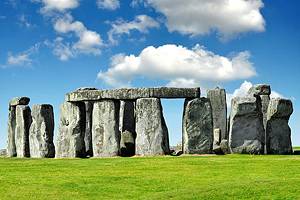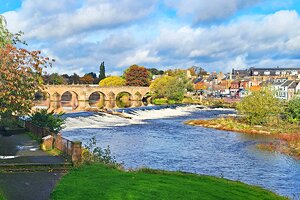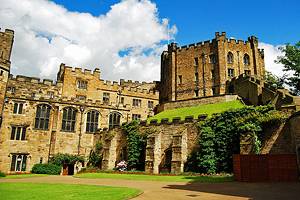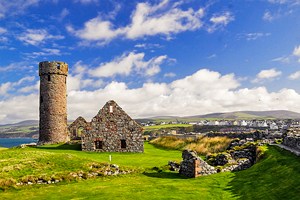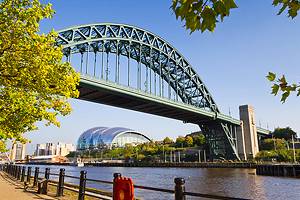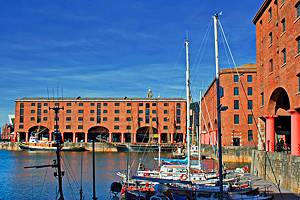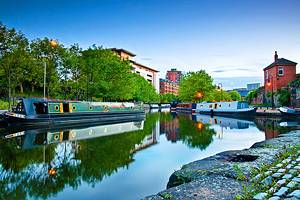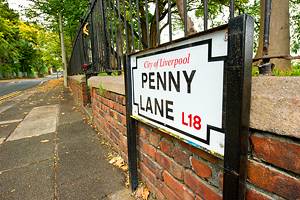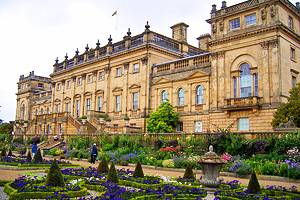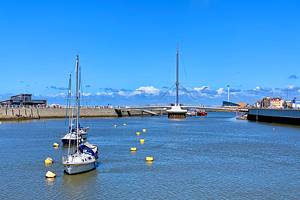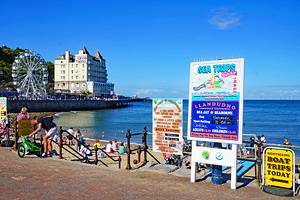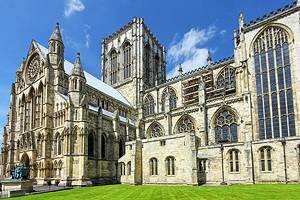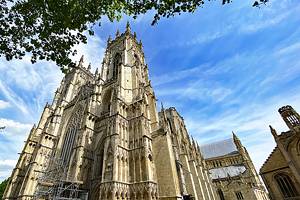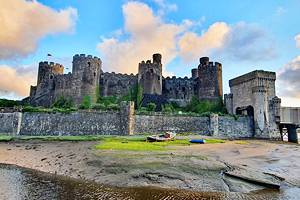Tourist Attractions in the Lake District, England
England's Lake District is located in Cumbria and named for the 16 glacial lakes that lie in long ribbons among its fells, moors, and green valleys. In this area, which measures only about 48 by 64 kilometers, there are 180 fells of more than 609 meters in altitude, one of which is 978-meter Scafell Pike, the highest mountain in England.
Much of the tourist activity is in the southern half of the region, where most of the historic literary attractions lie, while the quieter north's natural features are more appreciated by hikers and nature lovers. The Lakes District provided inspiration for writers, including William Wordsworth, John Ruskin, and Beatrix Potter, whose homes are popular places to visit, as well as artists Gainsborough, Turner, and Constable.
Most of the region is included in the Lakes District National Park. You can travel to the Lake District by train, and you'll find hotel accommodation throughout the region as well as B&Bs in country cottages.
You'll be certain to find the best places to visit and things to do using our handy list of the top tourist attractions in England's Lake District.
- Lake District National Park
- Lake Windermere
- Derwentwater
- Helvellyn
- Ullswater
- Beatrix Potter's Hill Top
- Hike Catbells High Ridge
- Dove Cottage
- Castlerigg Stone Circle
- Coniston Water
- Levens Hall & Topiary Gardens
- Aira Force
- Lowther Castle
- Lakeland Motor Museum
- Rydal Mount & Gardens
- Hire a Boat at Coniston Boating Centre
- Map of Tourist Attractions in the Lake District, England
Lake District National Park
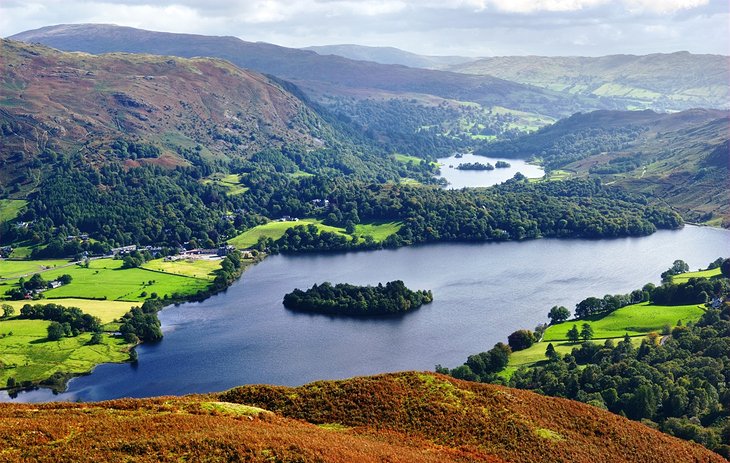
The 1,343-square-kilometer Lake District National Park includes some of the country's largest lakes, its tallest peak, and some of its loveliest scenery. The scenery and nature inspired writers, poets, and artists, some of whom made their homes here.
Several of the lakes have historic boats you can ride, and the entire region is laced with a network of walking and hiking trails. You can explore the area by car, bus, bike, or on foot, and there is train access to Windermere from Kendal, where the park headquarters is located. A park visitor center is at Brockhole and a boating center at Coniston.
Along with the lakes, some of the scenic highlights are the beautiful Newlands Valley, the magnificent views from Sphinx Rock, and the dramatic drive over Kirkstone Pass (the scenery is best going north).
Throughout the park are lakeside villages with activities and places to visit, as well as miles of scenic roads and trails for sightseeing.
Lake Windermere
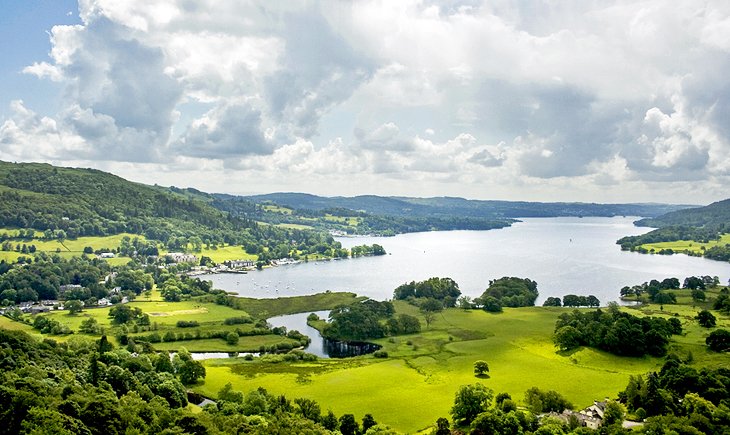
The best known and busiest of the lakes, Windermere is about 16 kilometers long, and you can explore it with Windermere Lake Cruises, which also serves as a ferry between points around the lake. You can also rent boats here to explore the lake on your own.
At the southern end of the lake, steam locomotives of the Lakeside & Haverthwaite Railway carry tourists into the Leven Valley in 1950s-era cars. You can combine that trip with a lake cruise.
Also at the southern end is the Lakes Aquarium, a popular attraction with the UK's largest collection of freshwater fish. At the restored Victorian Fell Foot Park, near Newby Bridge, you can picnic and hire rowboats at the beautifully restored old boathouses to explore the lake and the River Leven. The park also has a good playground for kids.
Derwentwater
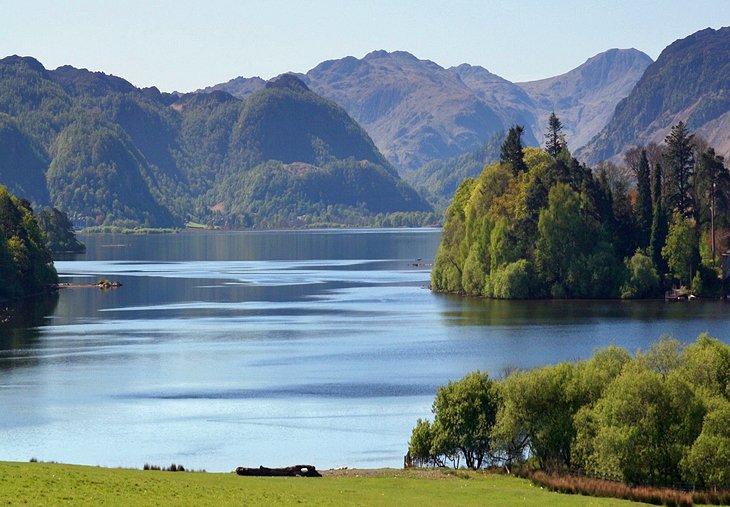
Less than five kilometers long, Derwentwater is an idyllic lake in the northern part of the national park, and a 10-minute walk from the center of Keswick. On its west is the ridge of Catbells, and extending into the lake on the east is Friar's Crag, a favorite viewpoint. Beautiful Borrowdale Valley opens at its southern end.
Keswick Launch Co. makes a one-hour circuit of the lake on small boats that stop at seven points, where you can hop off to explore, or follow lakeside trails and catch the next boat at another stop. Around the entire perimeter of the lake is a 12-kilometer walk.
In Keswick, it's hard to resist a stop at the quirky Pencil Museum, where you'll learn how they are manufactured and how the discovery of graphite began a whole local industry.
Helvellyn

One of the highest peaks in the English Lake District, Helvellyn is also one of its most popular hikes, for both casual climbers and those who relish a rugged scramble. The Helvellyn Horseshoe is a result of two geologic eras, first a volcano that left a bowl-shaped caldera, then the glaciers that scoured it out and carved one rim into the knife-edge ridge known as Striding Edge.
The view from any place along its rim, especially from the summit, is spectacular, out across the lakes and mountains, or looking down onto the high-set mountain lake of Red Tarn.
On the other side of the horseshoe, the trail most casual hikers use runs along the grassy crest of a broad ridge with views across to the knife edge and down into the valley lakes.
Ullswater
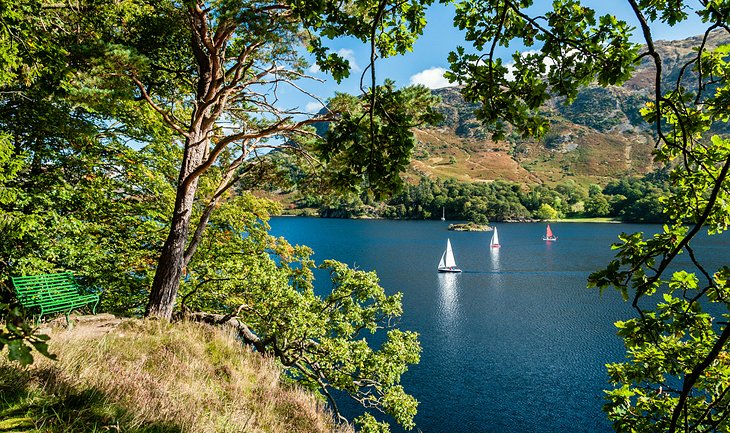
At 14 kilometers long and less than two kilometers wide, Ullswater is the second largest lake in the Lake District. Its setting is also beautiful, under Helvellyn Mountain. You can explore the lake on the 1887 Lady of the Lake or the 1889 Raven, both of which leave from the attractive village of Pooley Bridge, whose origins go back to the 16th century.
Ullswater is a particular favorite for hikers and walkers, who can follow the 32-kilometer Ullswater Way around the lake or combine the trail with boat rides for a 12-kilometer hike. Between Pooley Bridge and Aira Force, the Ullswater Way leads to Maiden Castle, a former hillfort with spectacular views of the Ullswater Valley.
Beatrix Potter's Hill Top
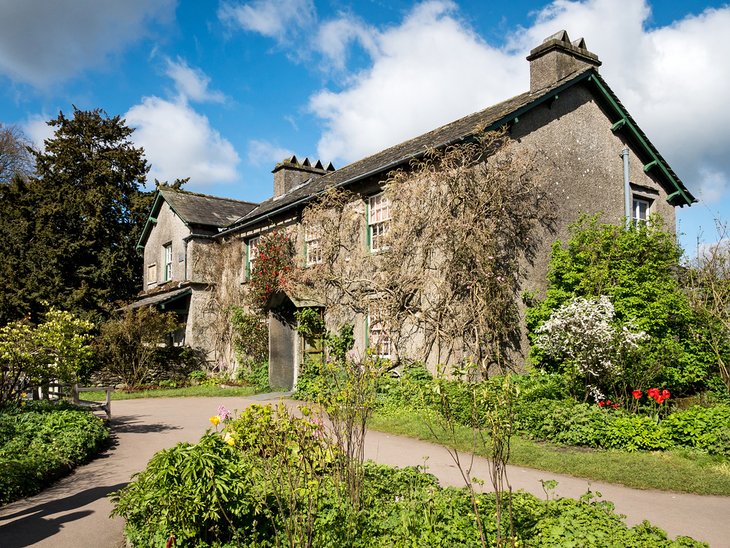
Bought in 1905 with proceeds from her first book, the Tale of Peter Rabbit, the 17th-century farmhouse at Hill Top and the surrounding countryside inspired many of Beatrix Potter's books. When she left the house and farm to the National Trust, she stipulated that it be shown in the same condition as when she lived here, and in each room you can see objects that relate to her stories.
Along with the doll house setting for The Tale of Two Bad Mice, you'll see the desk where she wrote. The garden is a charming and seemingly random mix of flowers, herbs, vegetables, and fruit, where you will half expect to see one of her characters scampering away. This is a very popular attraction, and there is often a wait to enter the house; the timed tickets cannot be booked in advance.
Address: Near Sawrey, Ambleside
Hike Catbells High Ridge
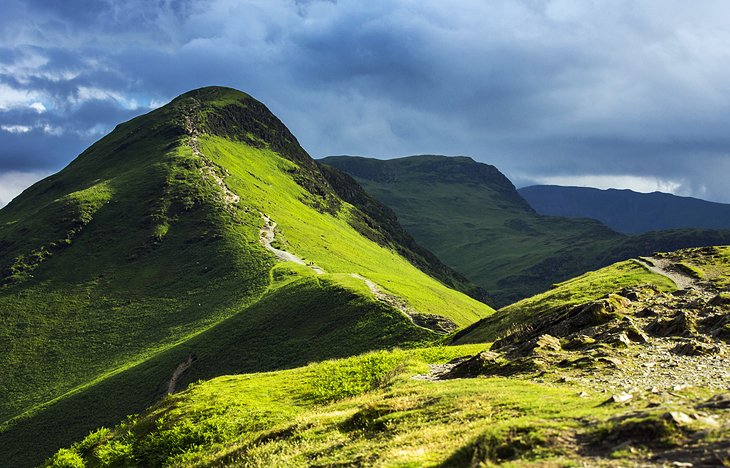
The distinctive peak of Catbells lures walkers of all capabilities, a short half-day climb to the final fell on a long ridge that separates Derwentwater from the Newlands Valley. The peak is 451 meters high, and you can hike up and back from Keswick for a spectacular view.
Although it's a short climb and the trail is good, it is steep in places. Once on top, strong walkers won't be able to resist following the ridge along the fells of Maiden Moor, High Spy, Dale Head, Hindscarth, and Robinson before descending into the Newlands Valley. It's a 14-kilometer hike, with dramatic scenery along the entire open ridge line.
Dove Cottage
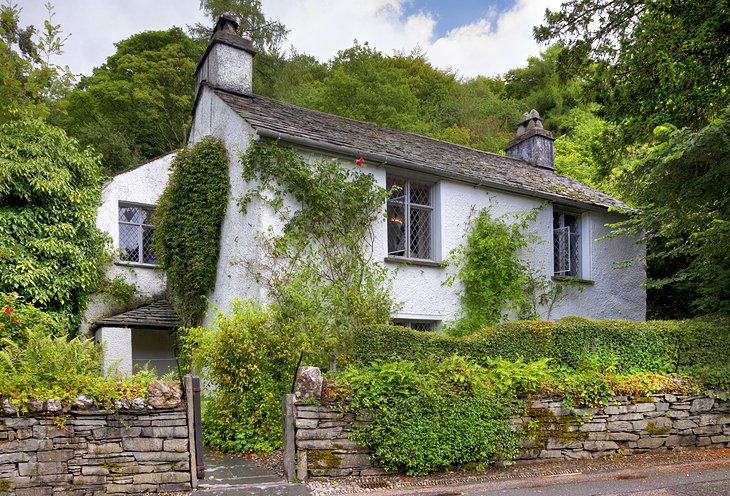
The first family home of the great British poet William Wordsworth, Dove Cottage is a traditional Lakeland cottage with dark wood-paneled walls and stone floors, heated by coal fires. Still furnished with the Wordsworth family belongings, the cottage looks much as it did when the poet lived and wrote here, and is a mirror of life in the early 19th century.
Next door in a separate museum, you can see memorabilia about the poet, his family, his travels, and his work. The years at Dove Cottage were among his most productive, when he was inspired by the Lakeland scenery and the garden he and his sister planted outside their cottage. He wrote some of his poetry here amid the flowers, vegetables, butterflies, and birds.
Address: Grasmere, Ambleside
Castlerigg Stone Circle

Of the more than 300 stone circles in England, Castlerigg is not only among the oldest, it is one of the most atmospheric. It is dramatically sited, with 38 stones aligned with the tallest of the surrounding fells, and the scene uncluttered by admissions offices or souvenir stands. Yours may be the only car there. Occasionally, volunteers may be there to give some more historical background.
Unlike most of England's stone circles, which are Bronze Age burial sites dating from 2000 to 800 BC, this one was constructed about 3000 BC in the Neolithic period. More than 30 meters in diameter, the circle originally had 42 stones, some more than two meters high. For the full dramatic effect, go at sunset.
Author's Tip: You can get from Keswick to the Castlerigg Stone Circle by Stagecoach buses, which provide a good way to get around in the Lake District.
Address: Castle Lane, Underskiddaw, Keswick, Cumbria
Coniston Water
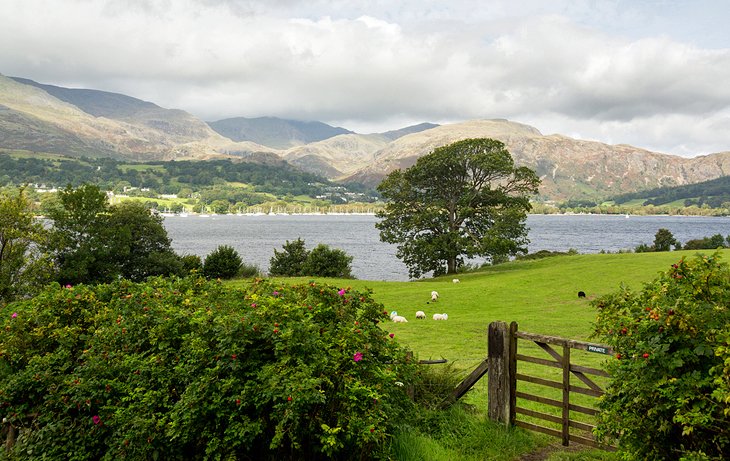
About eight kilometers long and less than a kilometer wide, Coniston Water lies beneath the eastern slope of the mountain known as the Old Man of Coniston, which towers above the lake and Coniston Village. You can explore the lake on board the 1859 steam yacht Gondola or the solar-powered Coniston Launch, or go under your own steam, hiring a boat or bike from Coniston Boating Centre.
Scenic boat rides include a stop at Brantwood, home of John Ruskin, one of the most influential minds of the Victorian era. His former home offers insights into his work, as well as fine art and objects collected in his extensive travels. The house is set in gardens that frame views of the lake and fells. In the village is the Ruskin Museum, which tells the story of Coniston from its early Stone Age inhabitants.
Levens Hall & Topiary Gardens

At the entrance to the Lake District National Park, Levens Hall began about 1250 as a Pele Tower, and grew into a magnificent Elizabethan manor house. You can tour the interior, with its fine oak paneling and ornate plasterwork, antique furnishings, and works of art.
Beautiful as it is, Levens Hall is more famous for its remarkable gardens. These include the oldest topiary gardens in the world, begun in the 1690s and largely unchanged since that time. Hidden behind a stone wall, these ancient box and yew trees have been trained and sculpted into geometric and freeform shapes, and clipped to form walls and gates. Surrounding these green sculptures are masses of luxuriant perennial flowers and seasonal bedding plants, all grown in the estate's greenhouses.
Beyond are more flowers in one of England's finest herbaceous borders, a rose garden, and kitchen gardens. A wildflower meadow, lawns, and a labyrinth of willows combine to make this one of England's premier garden attractions.
Address: Kendal, Cumbria
Aira Force
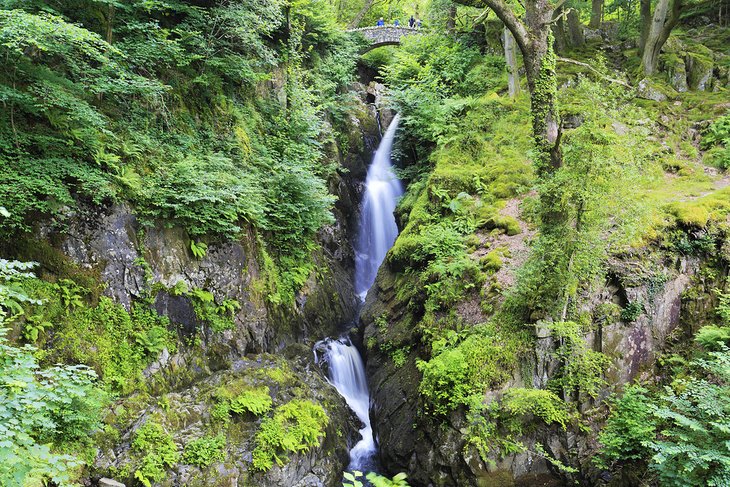
A graceful stone arched bridge poised over its top adds the finishing touch to this beautiful waterfall as it drops 19 meters, in stages, through a rocky ravine. The path from the car park to the falls is an easy one, and there are nature trails to follow, including one devoted to the wide variety of local trees.
Those who want to see more of this former hunting ground that inspired Wordsworth's poem I Wandered Lonely as a Cloud can follow the new off-road footpath between Aira Force and Glencoyne Bay.
A scenic approach to this valley is from Ambleside, over the steep and solitary Kirkstone Pass. Or relax on board a ferry and avoid the parking fee; Ullswater Steamers from Glenridding will bring you to Aira Force.
Lowther Castle
The grand battlemented facade and outer walls are all that remains of the early-19th-century Lowther Castle, once the region's grandest, with more than 300 rooms. Today, even those walls and towers, with sky showing through the empty windows, make an impressive introduction to the estate and its restored gardens.
Demolished, except for the outer walls, in 1957, the castle ruins and its gardens lay abandoned for more than 50 years and overgrown until the estate's recent recovery as a show garden and adventure playground.
The castle has been preserved as a ruin and today the extensive ruins are a romantic backdrop to the gardens that thrive amid its stones. Courtyards and terraces are planted in parterre gardens, and the magnificent rose garden has been restored to its original curving arabesques.
The grounds are extensive, and you can rent bicycles (mountain bikes or electric) to explore the miles of paths, or take a guided bike tour to discover its secrets. Children love the Lost Castle, a large play structure that echoes the castle in wood, with turrets to climb, passages to wriggle through, zip lines, slides, and lots of places to pretend to be knights and princesses.
Address: Lowther, Penrith, Cumbria
Lakeland Motor Museum
Beside the River Leven, south of Lake Windermere, Lakeland Motor Museum overflows with more than 30,000 cars, motorcycles, scooters, bicycles, microcars, quadricycles, and other wheeled road vehicles and their accoutrements. These are enhanced by films and exhibits on related subjects, such as women's travel fashions, hood ornaments, advertising, and toy cars.
From the everyday "I used to drive one of those" cars to one-of-a-kind vehicles such as the only surviving example of a Turner 1949 Tri-Van, the museum covers nearly everything that rode the roads on wheels in the 20th century.
A separate display area houses an exhibition on Malcolm Campbell's 1939 water speed record of 141.740 mph, in the powerboat Blue Bird K4 on Coniston Water. Along with a replica of Blue Bird, the exhibition also includes full-sized replicas of the 1935 Blue Bird car and the 1967 jet hydroplane Bluebird K7.
Author's Note: Even for those not enraptured by classic automobiles, the Lakeland Motor Museum is a good afternoon's diversion when the weather makes outdoor activities less enticing.
Address: Old Blue Mill, Backbarrow, Ulverston
Rydal Mount & Gardens
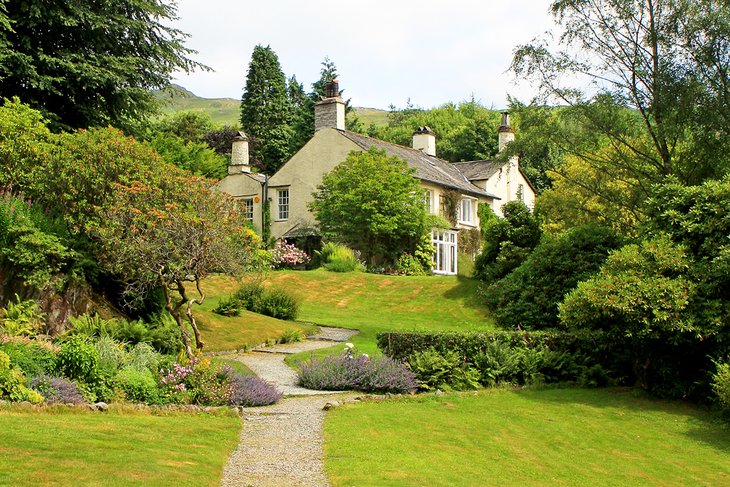
Poet William Wordsworth lived at Rydal Mount from 1813 to his death in 1850, at the age of 80. At this home overlooking Lake Windermere, Rydal Water, and the fells, he wrote some of his best-loved works and revised many of his earlier works for publication, including his best-known poem Daffodils.
Larger rooms were added to the original Tudor cottage in 1750, but the original stone floors and wooden beams remain in the dining room, part of the old cottage. Elsewhere, you'll see bedrooms and Wordsworth's attic study. Throughout the house are portraits, mementos, and first editions of Wordsworth's works.
Compared to the garden the poet created at Dove Cottage, the one at Rydal Mount is a more spacious four acres, with terraces, rock pools, rare species, and brilliant displays of blooms in various seasons. It has been kept much as he originally designed it. In good weather, March through October, the tea room spills out onto a garden terrace, and savoring a cup of tea in Wordsworth's garden is one of the most popular things to do for poetry lovers.
Address: Rydal Mount, Ambleside
Hire a Boat at Coniston Boating Centre
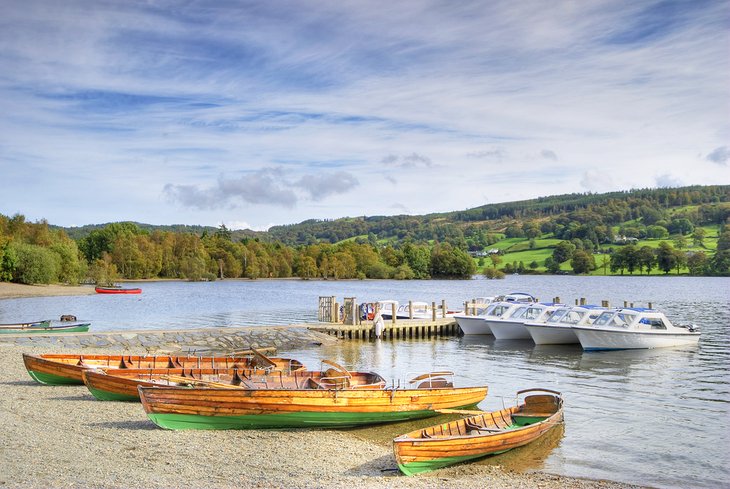
With all these lakes, you'll certainly want to take to the water at some point in your trip. While several lakes have boat tours, you can explore Coniston Water on your own in a Canadian-style canoe, an open-top kayak, rowboat, or electric motor boat rented from the Boating Center at Coniston.
If you know how to sail, you can also hire a sailing dinghy here and join the others skimming across the lake in the wind. The center also rents stand up paddleboards, and bicycles for those who prefer to explore the shore on two wheels.
Address: Lake Road, Coniston, Cumbria



